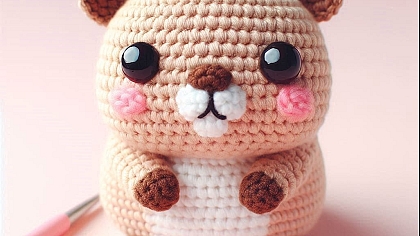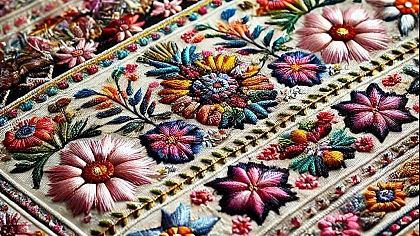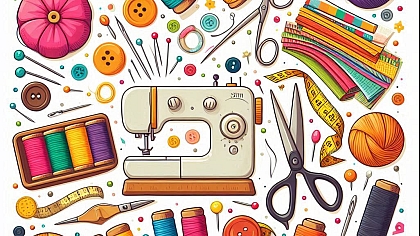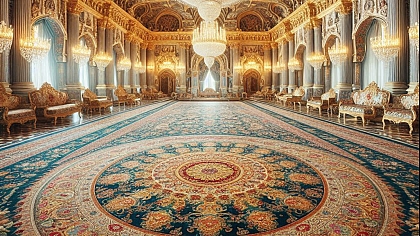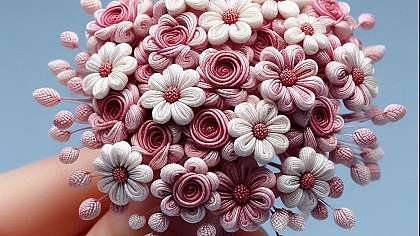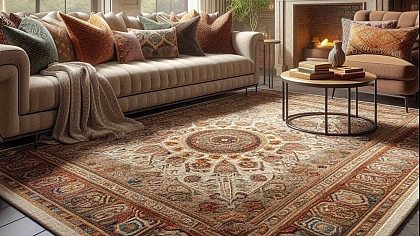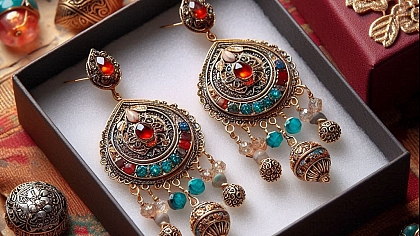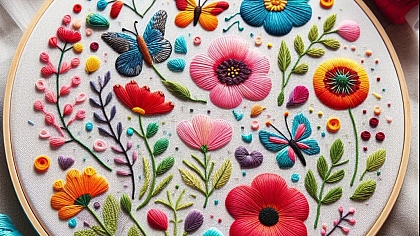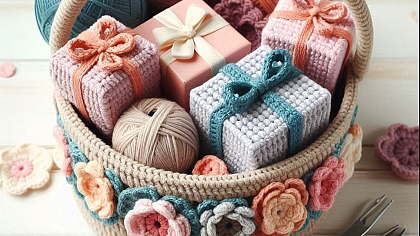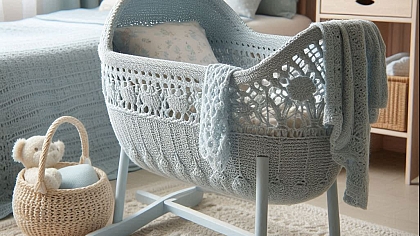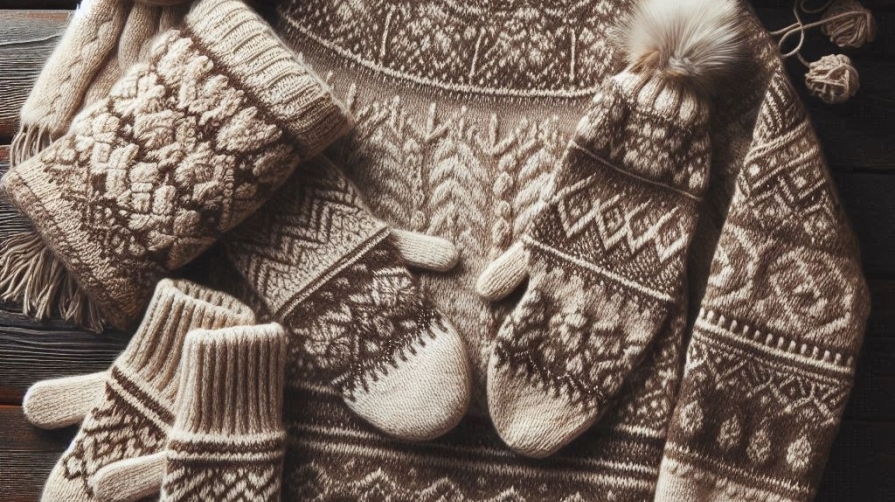
The History of Knitting: From Ancient Times to Modern Trends
Knitting is more than just a craft; it is a journey through time, a testament to human ingenuity, and a warm embrace of tradition and innovation. As knitters, we often find ourselves connecting with a rich tapestry of history, where each stitch tells a story of cultural evolution and personal expression. Let us embark on a detailed exploration of knitting’s history, tracing its origins, evolution, and contemporary significance.
Ancient Beginnings: The Origins of Knitting

The exact origins of knitting are shrouded in mystery, much like the intertwining loops of yarn we create with our needles. The earliest evidence of knitting dates back to ancient Egypt, around the 11th century CE. However, what we know as knitting today might have evolved from earlier textile practices, such as nålbinding, a technique using a single needle to create fabric through looping and knotting. Nålbinding artifacts have been discovered in various parts of the world, including Scandinavia and the Middle East, predating knitting by several centuries.
In ancient Egypt, beautifully crafted fragments of what is believed to be early knitted fabric have been found in Coptic tombs. These pieces, often made from cotton and wool, showcase intricate designs and vibrant colors, suggesting that even in its infancy, knitting was not just a utilitarian craft but also an artistic endeavor. The skill and precision evident in these ancient textiles highlight the sophistication and creativity of early knitters.
The Spread of Knitting: From the Middle East to Europe
As trade routes expanded and cultures intermingled, knitting spread from the Middle East to Europe. The craft gained popularity in Spain during the Moorish occupation, where Muslim artisans introduced complex knitting patterns and techniques. These influences are evident in the geometric motifs and delicate craftsmanship of Spanish knitted textiles from this period.
By the 14th century, knitting had firmly established itself in Europe. The first known knitting guild was founded in Paris in 1527, signifying the craft's growing importance and the need to regulate and preserve its standards. These guilds were crucial in maintaining the quality of knitted goods and in passing down skills from master knitters to apprentices. Knitting became an essential part of everyday life, providing clothing and accessories for both the nobility and the common folk.
In Northern Europe, knitting evolved differently, adapting to the harsh climates and practical needs of the population. Fishermen’s sweaters, such as the iconic Aran and Fair Isle patterns, became synonymous with warmth and durability. Each region developed its own distinct styles and techniques, often passed down through generations. These regional variations reflect the ingenuity of knitters in utilizing available resources and meeting local demands.
Knitting in the Renaissance and Beyond

The Renaissance era brought a resurgence of interest in arts and crafts, and knitting was no exception. During this period, knitting patterns became more elaborate, and the craft gained recognition as a skilled and respected profession. The invention of the knitting frame in 1589 by William Lee revolutionized the industry, allowing for faster production of knitted fabrics. However, hand knitting retained its importance, particularly for creating fine garments and intricate lacework.
Knitting also played a significant role during times of conflict. In the 17th and 18th centuries, hand-knitted stockings were in high demand for soldiers, leading to the establishment of knitting schools and cottage industries. These schools provided training for women and children, who contributed significantly to the production of knitted goods. Knitting became a communal activity, fostering a sense of unity and shared purpose.
The Industrial Revolution and the Advent of Machine Knitting
The Industrial Revolution in the 19th century marked a turning point in the history of knitting. The introduction of mechanized knitting machines transformed the industry, enabling mass production of knitted fabrics and garments. Factories sprang up across Europe and North America, producing everything from stockings to sweaters on a scale previously unimaginable.
Despite the rise of machine knitting, hand knitting continued to flourish as a domestic craft. The Victorian era saw a revival of interest in handmade goods, with knitting patterns and instruction books becoming widely available. Women’s magazines featured knitting patterns, and social clubs formed around the craft, where knitters could gather to share techniques and showcase their work.
Knitting also played a crucial role during the World Wars. The “knit for victory” campaigns encouraged civilians to knit garments and accessories for soldiers, providing both practical support and a sense of contribution to the war effort. Knitting became a patriotic act, and the sense of community and purpose it fostered helped to boost morale during challenging times.
The Mid-20th Century: Knitting in the Modern World
The mid-20th century witnessed a knitting renaissance, driven by a combination of tradition and innovation. The 1950s and 1960s saw a resurgence of interest in hand knitting, with new materials and patterns emerging. Synthetic yarns, such as acrylic and nylon, became popular, offering knitters a wider range of options and colors. These new materials were affordable and easy to care for, making knitting accessible to a broader audience.
The 1960s and 1970s also saw knitting being embraced by the counterculture movement. Young people adopted knitting as a form of self-expression and rebellion against mass-produced fashion. Handmade, one-of-a-kind pieces became symbols of individuality and creativity. This period also saw the emergence of knitting as a form of art, with artists using yarn and needles to create innovative and thought-provoking installations.
Knitting in the 21st Century: A Craft Revived and Reimagined
In the 21st century, knitting has experienced a remarkable revival, blending traditional techniques with modern trends. The rise of the internet and social media has transformed the knitting community, allowing knitters from around the world to connect, share patterns, and showcase their work. Online platforms, such as Ravelry, have become invaluable resources for knitters, providing access to a vast library of patterns, tutorials, and forums.
The slow fashion movement has also contributed to the resurgence of knitting. As consumers become more aware of the environmental and ethical implications of fast fashion, there is a growing appreciation for handmade, sustainable garments. Knitting allows individuals to create unique, high-quality pieces that stand the test of time, reflecting a shift towards mindful consumption.
Modern knitting trends are characterized by a blend of tradition and innovation. While classic patterns and techniques remain popular, contemporary knitters are not afraid to experiment with new materials, colors, and styles. From chunky, oversized sweaters to delicate lace shawls, the diversity of modern knitting is a testament to the creativity and adaptability of the craft.
The Cultural Significance of Knitting

Knitting is more than just a means of creating clothing; it is a cultural phenomenon that reflects the values and traditions of societies across the globe. In many cultures, knitting is a communal activity, bringing people together to share stories, skills, and experiences. The act of knitting can be meditative, providing a sense of calm and focus in a busy world. For some, it is a way to connect with their heritage, preserving techniques and patterns passed down through generations.
Knitting also holds a special place in the world of art and fashion. Designers and artists use knitting to challenge conventional notions of textile and fashion, creating pieces that are both functional and expressive. Knitted garments have graced the runways of major fashion shows, showcasing the versatility and elegance of the craft.
In addition to its artistic and cultural significance, knitting has therapeutic benefits. The repetitive motions of knitting have been shown to reduce stress and anxiety, promoting mental well-being. Knitting groups and classes provide social support and a sense of belonging, helping individuals to build connections and combat loneliness.
The Future of Knitting
As we look to the future, knitting continues to evolve, embracing new technologies and trends while honoring its rich heritage. The advent of smart textiles and wearable technology presents exciting possibilities for knitters, allowing them to create garments that are not only beautiful but also functional and interactive. Innovations in yarn production, such as eco-friendly and biodegradable fibers, reflect a growing commitment to sustainability and environmental responsibility.
The knitting community remains vibrant and dynamic, driven by a shared passion for the craft and a desire to learn and innovate. Workshops, retreats, and online courses offer opportunities for knitters of all levels to hone their skills and explore new techniques. The growing popularity of knitting podcasts and blogs highlights the enthusiasm and creativity of the community, inspiring knitters to push the boundaries of what is possible with yarn and needles.
The history of knitting is a rich and intricate tapestry, woven with threads of tradition, innovation, and creativity. From its ancient beginnings to its modern resurgence, knitting has been a constant companion to humanity, providing warmth, comfort, and a means of self-expression. As we continue to knit our way into the future, we honor the legacy of those who came before us, while embracing the endless possibilities that lie ahead. Whether we knit for practicality, art, or the sheer joy of creation, we are part of a timeless tradition, connected by the simple, yet profound, act of looping yarn together with our needles.

